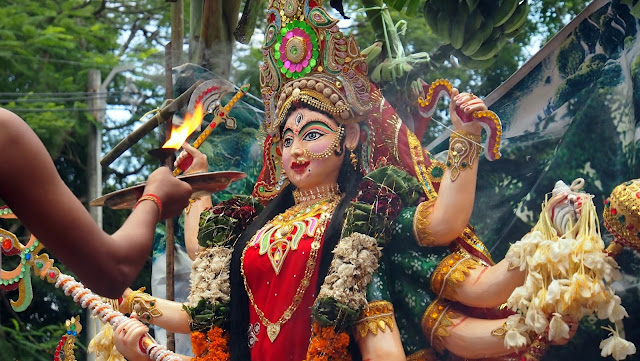It is any day; the new Government will take over the reins, a
change which Myanmar will be witnessing after 25 years. It is time when the
enlightened Buddhist Monks will have to help the Government in building a just
and empowered society, not divided by class, creed and religion. The military,
which will continue to look after Home, Defence and Borders will need to show
more efficiency and dedication in their work to serve the cause of making the
democracy of Myanmar meaningful.
Many of us may not realize that Myanmar tops the list in WGI
(World Giving Index) among the 145 nations based on the criteria of the
percentage of people donating for charity, volunteering their time and those
helping strangers. Hence, we must understand, it is not about how resource rich
you are, it is all about how much you are deep rooted in your tradition through
compassion.

 Siliguri. 12th
of November, 2015:
Today, the day after Diwali, when we should have cleaned our souls and through
the festival of light have enlightened the world, it is also time to look to
our neighbours. Only a month before was Durga Puja or Dusshera, a major
festival where people celebrate to victory of good over the evil. This year I
decided to be in Myanmar the Durga Pujas. Only the Myanmar Indians and Gorkhas
were involved in Durga Puja, the rest of Myanmar was busy discussing the
legendary November 8th elections and now results of the National
Elections at Myanmar has been declared, which is the second major step towards
expectations for an almost complete democracy. It is the entire world looking
forward to the political developments in this Land of Gold. With India and her
ACT East Policy, how much are we concerned with the developments in Myanmar? The
Bihar Election results have been declared quite some days ago and we are still
discussing the engagement of our western neighbour, Pakistan in it, in all
media, local, regional, National or Chai (Tea). How much are we concerned about
the long Indo-Nepal border along Bihar and the latest happenings there?
Siliguri. 12th
of November, 2015:
Today, the day after Diwali, when we should have cleaned our souls and through
the festival of light have enlightened the world, it is also time to look to
our neighbours. Only a month before was Durga Puja or Dusshera, a major
festival where people celebrate to victory of good over the evil. This year I
decided to be in Myanmar the Durga Pujas. Only the Myanmar Indians and Gorkhas
were involved in Durga Puja, the rest of Myanmar was busy discussing the
legendary November 8th elections and now results of the National
Elections at Myanmar has been declared, which is the second major step towards
expectations for an almost complete democracy. It is the entire world looking
forward to the political developments in this Land of Gold. With India and her
ACT East Policy, how much are we concerned with the developments in Myanmar? The
Bihar Election results have been declared quite some days ago and we are still
discussing the engagement of our western neighbour, Pakistan in it, in all
media, local, regional, National or Chai (Tea). How much are we concerned about
the long Indo-Nepal border along Bihar and the latest happenings there?


We share more than 1600kms with Myanmar. Along with East
Himalaya, Indo-Burma is another Biodiversity Hotspot, the least explored among
the 08 Biodiversity Hotspots of the World. The forests on both sides of the
border are also the hotspots for anti-National groups for both countries, India
and Myanmar, whose presence have caused irreparable damage to wildlife and
nature resources in the region. While trying to create a proposal of Mishmi
Community Conservation Reserve and Tangsa Community Conservation Reserve in
Eastern Arunachal Pradesh, I have experienced that the natural resource of the
Indian side, which continues to the Myanmar side are probably the last
frontiers of primary habitat in the world. Someone needs to address this common
issue and why not “ACT East”.



It was during the Dihing-Patkai Festival several years ago, the
first engagement with the Stilwell Road started, after which there was no
looking back. The Ledo Road through Jairampur and Nampong, leads to Pangsau
Pass and further to ‘Lake of No Return’ (Nawng Yang) via Pangsaung village in
Myanmar. Maturing from the Dihing-Patkai Festival, I became an active part in
organizing the Pangsau Pass Winter Festival on behalf of Help Tourism. The
initial years it was more of pushing cars on the red muddy roads, but now it is
black topped National Highway. This is a historical and mythological route
which was used for ages by many Tai communities who reached through this route
to settle and make what is India’s Northeast today. Not long back, during the
Japanese occupation of Myanmar during World War II, thousands and millions of
Indians, Anglo-Indians, Indo-Burmese and Europeans in then Burma, now Myanmar,
escaped to India through this route. Several of their family members and
friends died in the journey. The sacrifice of lives by Indians, Chinese,
Africans, Elephants, Horses/Mules while building this road can only be
remembered when we chance upon a cemetery ground lost in the forests in this
route. The dream of Northeast India to drive this road from Dibrugarh-Ledo to
Kunming via Myitkyina continues.


During my recent trip to Myitkyina from Mandalay, I was quite
astonished to see the elaborate Hindu Temple beside the Ayeyarawady (Irrawaddy)
river. I doubt, I have seen such a temple in India. It was Durga Puja time and
the whole community of Indian origin seemed to be there, celebrating the
festival. The Gorkha people of Nepali origin also seemed to participate in
large numbers. From several online sites, I got an idea that there are more
than 9,00,000 Myanmarese Indians and 5,00,000 Myanmarese Gorkhas. Most of them
are decedents of people who served British India in Myanmar or who fought for
India’s Independence as INA (Indian National Army). The people of Indian origin
in Myanmar owe their roots to almost all states of India and for people from
India’s Northeast, it is almost a cross-border continuity. It is time when all
of us in India and Nepal must try and look into Myanmar and connect to the
people, who are part of the family.



Buddhism has tied us together for more than 2500 years:
Myanmar, Nepal and India. Every step that you take in Myanmar has some or the
other relation to Buddha. Kings, traders and people in general has nurtured
this relation for thousands of years, which cannot be wiped off all of a
sudden. Even till recently, Dr.Shayama Prashad Mookherjee, during his tenure in
the first Independent India Government and as the President of the Mahabodhi
Society kept close relations with Myanmar.


INA’s Burma Campaign, the development of the armed revolution
for an Independent India saw the tri-colour flag of Independent India in
Moirang, Manipur as early as in 1944 under the leadership of Netaji Subhas
Chandra Bose. A leader, who was often referred to as ‘the light of Asia’, was a
close part of Burma, now Myanmar. Along with the Burmese National Army, he has
worked on many frontiers against the British and Allied Army. The INA (Indian
National Army) battalions which fought with their headquarters in what is now
Yangon, and battles like the “longest opposed river crossing of World War II as
described by Field Marshall Slim” near Bagan and the hill retreat of Netaji at
May Myo, now Pyin Oo Lwin, the Bungalow of the Bombay-Burma Teak (Timber?)
Company are still to be recognized through a Indo-Myanmar relation.


In this century of Asia, it is India’s Northeast which will
lead the way, Myanmar will be our next home and India will be the second home
for the people of Myanmar. It has been a continuous endeavour for our
organization, Indo-Myanmar Fraternal Alliance, based at Imphal in Manipur to
run missionary road trips from Manipur to different places of Myanmar to
confirm better understanding between the people of Myanmar and India.
















